V2 Prototype King Tiger II Ausf. B tank
This is not the Porsche Turret King Tiger tank. The turret was designed and produced by Krupp.
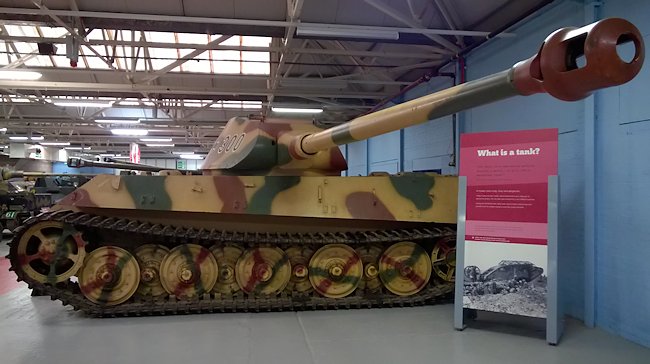
German V2 Prototype King Tiger II Ausf. B tank at the Tank Museum Bovington
Location
This Surviving King Tiger Tank is on show at the Tank Museum, Linsay Road, Bovington, Dorset. The nearest train station is Wool Railway Station. You can walk the 2 miles to the Museum but there are not pavements along the country road and if you are travelling with children it can be dangerous. It takes 45 minutes by foot. There is an irregular bus service from Wool Station that will get you to the museum but they only come once an hour in the morning starting after 9.30.
The last bus back to the station from the Tank Museum is just after 13.45 which is really silly. There is no Sunday bus service. The easiest way to get to the museum from the train station is by taxi. They can be pre booked with Garrison Cars to meet you when your train arrives and pick you up for the return trip from outside the museum. Their phone number is 01929 463395
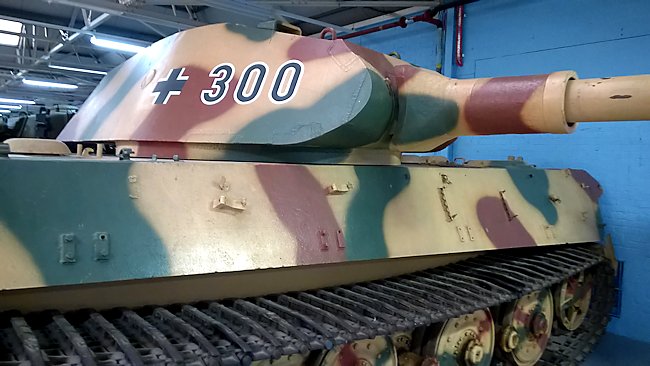
This early production rounded turret was made by Krupp NOT Porsche
Specifications
The Panzerkampfwagen VI Ausf. B Tiger, also commonly referred to as the Köningstiger, King Tiger, Royal Tiger or Tiger II tank was armed with a 88 mm (3.46 in) KwK43 L/71, 86 rounds and two or three 7.92 mm (3 in) MG 34 machine guns, 5800 round. Its armour ranged from 25mm to 180mm. It had a crew of five: commander, driver, gunner, loader and radio operator/machine gunner. It was powered by a V12 Maybach HL230 P30 690hp petrol engine. It weighed 69.8 tonnes. It had a top road speed of 35km/h (24mph). It had an operational range of 170 km (110 miles). Total production was 492 tanks.
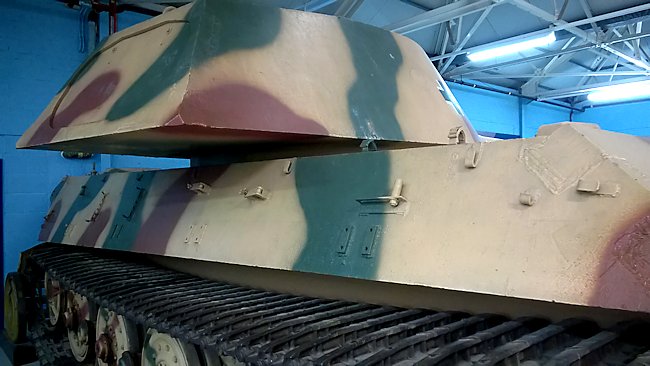
Rear view of the Krupp turret on the V2 Prototype King Tiger II Ausf. B tank
This Tank's History
This Panzerkampfwagen VI Ausf B Tiger II tank (Sd.Kfz. 182) V2 Prototype is wrongly called the Porsche turret Tiger II. Both types of turrets used on the Tiger II tank were designed and built by the weapons manufacturing company called Krupp, but they are regularly designated as Porsche (the first, curved model) and Henschel (the latter model). It is worth noting that neither Porsche, nor Henschel built any turrets. The Panzer IV Ausf B Tiger II tank is also known as the Königstiger and Royal Tiger. This tank is also known as the V2 prototype.
The Porsche company submitted designs for a new tank chassis using the Krupp turret but it was very complicated to build compared to the Henschel hull. The Henschel company was awarded the contract for the successor of the Tiger I tank. Preparations were made for production, and three production prototypes (V1, V2, V3) were built in November 1943.
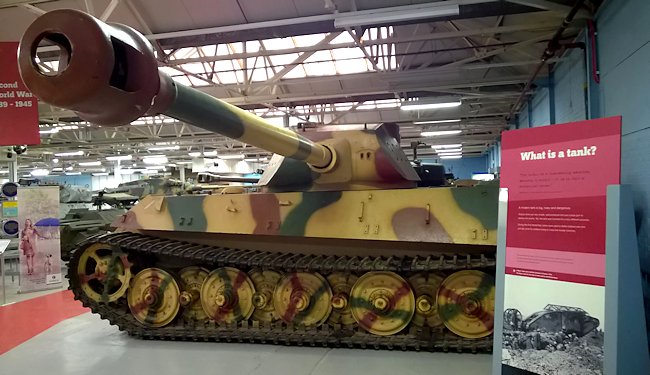
The track guards are missing along the length of the V2 Prototype King Tiger II Ausf. B tank
The first King Tiger Tank prototype V1 did not have the Zimmerit anti-magnetic mine coating, nor tooling or tool storage. The front mudguards were flat, with hinged sides extensions. Both the view port and pistol port in the turret sides were welded shut. The turret was of the early curved front Krupp model. The commander's cupola was protruding to the left side of the turret.
The two others prototypes were essentially the same as the V1 prototype, however, the V2 had a handwheel located on the firewall to close vents, in order to allow it to wade through deep water. All three prototypes were used at the factory for testing different modifications. The suspension on its left side was incomplete. Both the 80 cm (31.5 in) and 66 cm (26 in) wide tracks were tested on the prototypes. All three tanks were not intended to be used operationally just for testing. Mild steel was used to construct these text vehicles not armour plate.
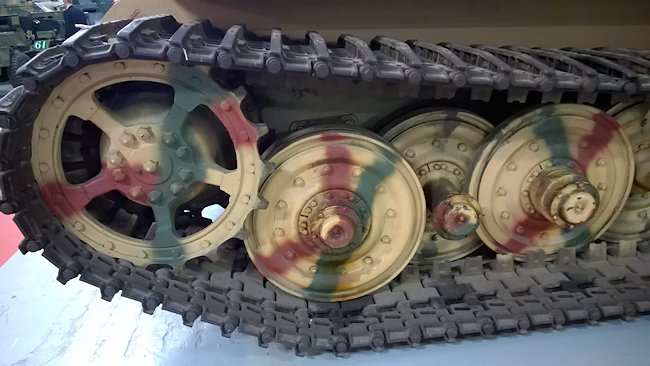
Overlapping road wheels and wide tracks on the V2 Prototype King Tiger II Ausf. B tank
The V2 prototype King Tiger was captured by British troops in the Heeres Waffenprufungamt (German Army Ordnance Testing Department) Haustenbeck, near Sennelager, Germany in 1945 and shipped to England. It was discovered with its tooling attached but without Zimmerit coating. It was painted in plain sand yellow Dunkelgelb livery.
Also captured at the same time was the V1 and V3 King Tiger prototypes, a Porsche chassis Jagdtiger, a Panther and the VK3001(H) tank prototype test vehicle. I believe the King Tiger tank V3 prototype had been painted with Zimmerit and had its gun destroyed after it was fired when the barrel was blocked.
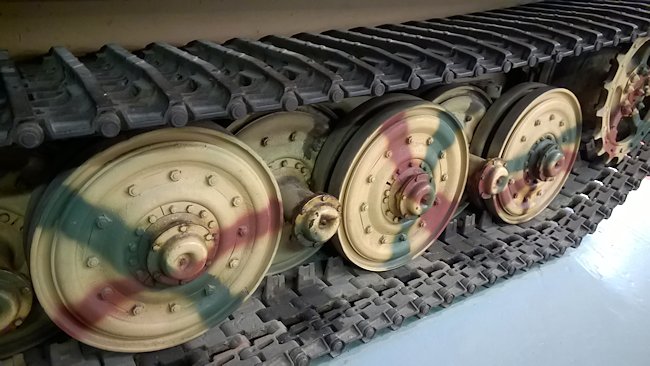
To avoid the sonic resonance of metal on metal the wheel is fitted with internal rubber rings that separate the rim from the hub. It cuts down noise but it was also an ingenious solution to the shortage of rubber in Germany during the war. It was complicated to build and repair.
The V2 prototype King Tiger tank arrived in Britain in 1946 at the same time as the Jagdtiger tank destroyer and both went to the School of Tank Technology (STT) at Chertsey, Surrey, before being moved to Bovington.
When it first arrived at the museum from the School of Tank Technology it was missing its 88mm gun. A spare one, of a later design, was found and fitted. Its suspension on its left-hand side was still incomplete and it was missing its track guards.
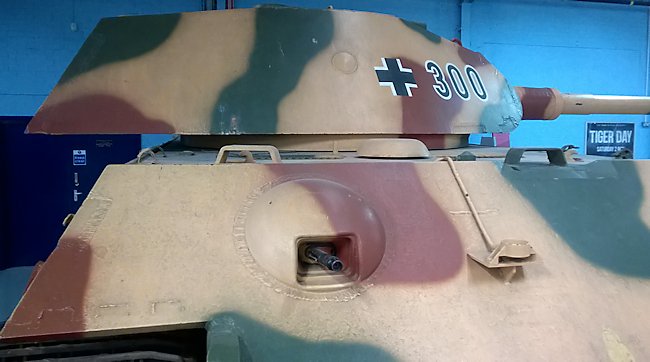
V2 Prototype King Tiger II Ausf. B tank was armed with a 7.92mm MG 34 ball mounted hull machine gun. Another machine gun was fitted next to the main gun in the turret.
The Tiger II moved to the Tank Museum at Bovington in 1952. It now displays a unit tactical number 300 on its turret even though it was not issued to a German fighting battalion. It has been given the livery and turret number of a King Tiger that fought in the sPz. Abt 503.
It is missing the commander’s cupola and crew hatches. The wheels and tracks move so it can be towed into different positions within the museum. The Maybach 230 engine was removed and fitted to the Tiger I tank at the Tank Museum in Bovington after that vehicles Maybach 210 engine became damaged.
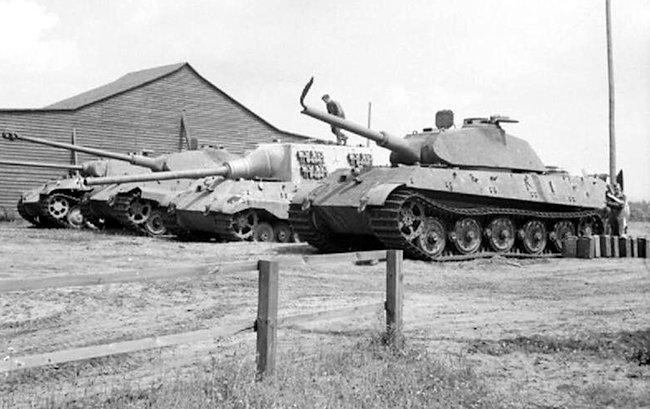
This photo shows the damage to the Prototype King Tiger II Ausf. B tank's gun barrel
Only fifty of the Krupp built curved front turrets were made. They were fitted to production tanks. No more were made after it was found that the rounded front acted as a 'shell trap'. If an enemy shell hit the lower portion of the curved mantel it would be defected downwards onto the tank chassis roof above the driver and hull gunner's position. This area of the tank is comparatively thinly armoured. The other King Tiger turret made by Krupp alleviated this problem by having a flat thickly armoured front.
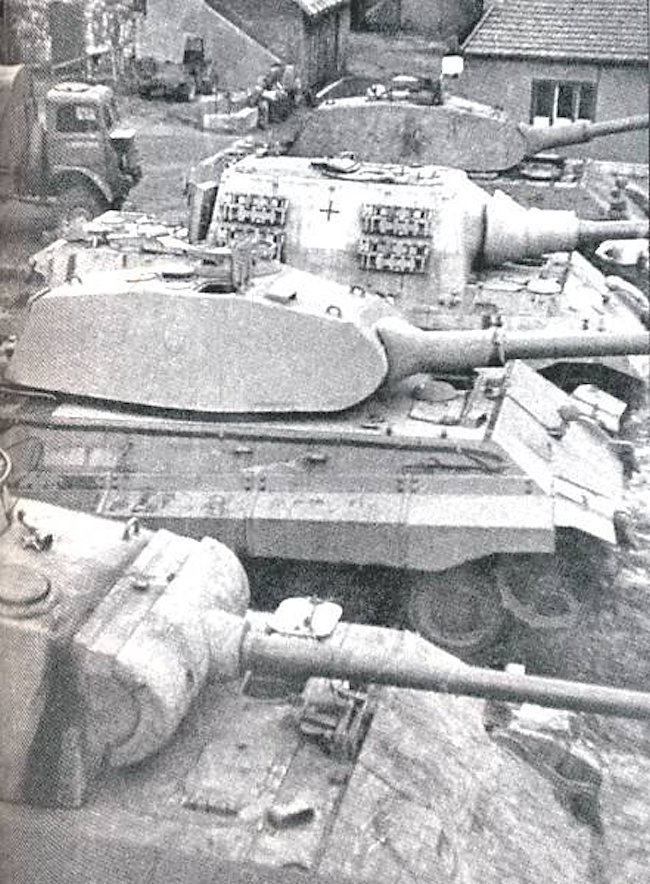
Two captured V2 Prototype King Tiger II Ausf. B tank next to a Jagdtiger
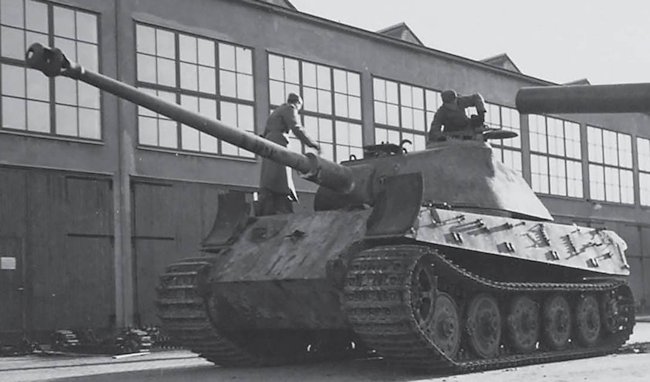
German V2 Prototype King Tiger II Ausf. B tank at the factory
Where can I find other preserved King Tiger Tanks?
- (Porsche turret) – Bovington Tank Museum
- Bovington Tank Museum
- Munster Panzer Museum
- December 44 Museum, La Gleize, Belgium
- Musée des Blindés, Saumur, France
- Schweizerisches Militärmuseum, Full, Switzerland
- Kubinka Tank Museum, Russia
- National Armor and Cavalry Museum, Fort Benning, GA, USA
- Wreck - Fontenay-Saint-Père, France
- Wreck - The Wheatcroft Collection, England
- Source - Pierre-Oliver Buan - http://the.shadock.free.fr/Surviving_Panzers.html
WW2 tank books

